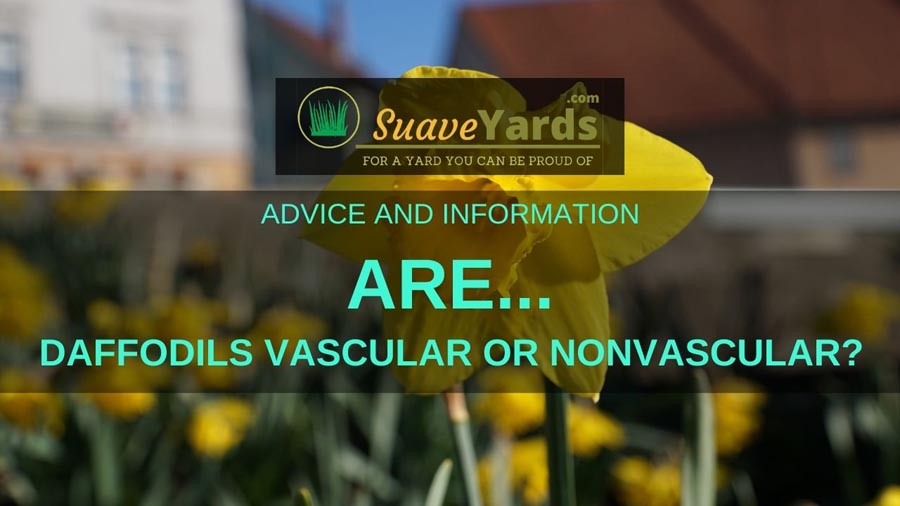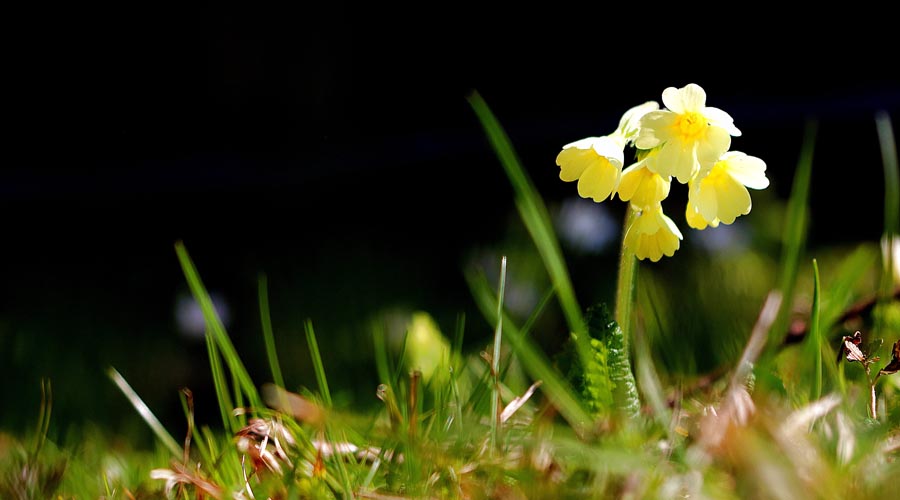
Are daffodils vascular or nonvascular might not be the first question that comes to mind when you think of the cheery heralder of spring, but in many ways it is actually quite an important one.
If you are interested in the science of plants and how they work at least.
In this article we are going to delve into the details of vascular and nonvascular plants and find out what a daffodil is classified as.
So let’s get started.
Are Daffodils Vascular Or Nonvascular?
Daffodils are vascular plants as they have a vascular system made up of xylem and phloem. These are tissues that only vascular plants have that transport water and nutrients around the plant. They also have true roots, stems and leaves, again exclusive to vascular plants. Pretty much all common garden plants are vascular plants.
Vascular and Non-Vascular Plants Explained
Vascular plants have a vascular system made up primarily of two tissues – xylem and phloem.
They are arranged in close proximity and are responsible for transporting water and food respectively.
They also possess true stems, leaves and roots.
Non-vascular plants don’t have xylem and phloem and thus don’t have a specialized vascular system for transporting food and nutrients.
They have a simpler tissue system to move water and nutrients around and almost diffuse from cell to cell.
For this reason, vascular plants are often seen as more evolved than nonvascular.
To put it more simply vascular plants have a system of small tubes within their stems, leaves and roots. These tubes allow water to move upward from the roots inside the stem.
RELATED ===> Are Daffodils Gymnosperms?
This occurs when water evaporates from the tiny pores on the surface of the plant’s leaves. Suction is generated and a vacuum is created which pulls up the water.
Xylem brings water, minerals and nitrogen compounds up from the roots and circulates them to the rest of the plant, in particular, the leaves
Phloem conducts sugars and other nutrients made in the leaves and moves them down in the plant, including into the roots.
Xylem and phloem act almost like blood vessels do in humans and animals, transporting important substances around the main organs.
These specialized structures mean that vascular plants can survive in a wide range of habitats.
Because they can control the water levels in their tissues, they have a much stronger tolerance to drying out.
On the contrary, nonvascular plants cannot control the water content in their cells and tissues and thus can’t survive in a habitat that is scarce in water.
As a way of adapting to this deficiency though, nonvascular plants are able to withstand dehydration and recover from it without their tissues being damaged.
This same ability to move water around means vascular plants can grow much larger than non-vascular ones.
RELATED ===> Are Daffodils Heliotropic?
Let’s quickly compare and contrast different parts of vascular and nonvascular plants:
Leaves
- Nonvascular: No true leaves. Instead, they have a flat surface containing a single layer of cells. Food photosynthesized is sent from one cell to another, there is no ability to transport food to tissues a distance away.
- Vascular: A much more complex leaf structure. They contain different types of cells that perform different functions. They have a waxy layer called the cuticle which stops them from losing moisture.
Stem
- Nonvascular: No true stem.
- Vascular: Have a multi-layered stem that performs a variety of roles and can vary from plant to plant. The outer layer protects and helps in the exchange of gases, in woody plants the outer layer is bark. The innermost tissue of the stem is the vascular tissue and assists with transporting nutrients.
Root
- Nonvascular: Simply anchors the body of the plant into the soil.
- Vascular: A complex system, similar to the stem structurally.
What Is a Daffodil Classified As?

A daffodil is a vascular plant.
If you dissect the stem of a daffodil you will see bundles of vascular tissue, including the xylem that moves the water and minerals from the root up to the stem and the phloem tissues that move the food made by photosynthesis from the leaves to other parts of the plant.
Alongside their well-developed vascular system, daffodils also possess true roots, stem and leaves.
Most of the plants we see each day are vascular, and all trees are vascular as are grass and all common garden plants.
Non-vascular plants are things like mosses, liverworts, hornworts, ferns and algae.
RELATED ===> What is the Difference Between Daffodils And Buttercups?
Final Thoughts
If you weren’t familiar with what constitutes a vascular or nonvascular plant, when you read up on them it is evident which category a daffodil falls into.
They contain complex vascular tissues, namely xylem and phloem, that transport water and nutrients around the plant.
They have true stems and roots and a complex leaf system.
Daffodils are most definitely vascular plants.
In fact, if are ever looking at a plant in your garden and trying to work out if it is vascular or non-vascular then the likelihood is it is vascular.
Pretty much all common garden plants are vascular plants.
